Michael A Laird
age ~78
from Lawrence, MA
- Also known as:
-
- Alan M Laird
- Allen Laird
- Michaela Laird
- Mike A Laird
- Michael A Lairo
- Maria Laird
- Phone and address:
-
36 Lenox St, Lawrence, MA 01843
9785022022
Michael Laird Phones & Addresses
- 36 Lenox St, Lawrence, MA 01843 • 9785022022
- Plaistow, NH
- Alva, FL
- Rowley, MA
- 13 Bodwell Ave, Salem, NH 03079 • 6038984044
- Lee, FL
- Methuen, MA
Lawyers & Attorneys

Michael Laird - Lawyer
view sourceOffice:
Crowe & Dunlevy
Specialties:
Commercial Real Estate
Project Development
Finance
Construction and Leasing
Project Development
Finance
Construction and Leasing
ISLN:
905674016
Admitted:
1979
University:
Harvard University, B.A., 1973
Law School:
University of Oklahoma College of Law, J.D., 1979
Us Patents
-
Modification Of Media With Common Attributes On A Digital Nonlinear Editing System
view source -
US Patent:6571255, May 27, 2003
-
Filed:Sep 9, 1999
-
Appl. No.:09/392823
-
Inventors:Robert Gonsalves - Wellesley MA 02481
Michael D. Laird - Nashua NH 03062 -
International Classification:G06F 1700
-
US Classification:7071041, 382167
-
Abstract:A modification may be specified for several segments sharing a common attribute. Such a shared modification may be combined with other modifications made to a composition or part of a composition. A modification may be applied to section of digital media, where a first segment of a media composition represents at least a section of a digital media source. An indication of the modification is stored such that the modification is applied to other segments on the system having an attribute in common with the first segment. Such attributes may be related to the source from which the segment originates or the composition in which the segment is used.
-
Multiframe Rendering Of Video Data On A General Purpose Computer
view source -
US Patent:6791556, Sep 14, 2004
-
Filed:Apr 5, 2000
-
Appl. No.:09/543190
-
Inventors:Michael D. Laird - Nashua NH
-
Assignee:Avid Technology, Inc. - Tewksbury MA
-
International Classification:G06F 1202
-
US Classification:345543, 345540, 345541, 345545, 345547, 711147, 711153, 711170
-
Abstract:Processing video data with a combination of one or more operations, such as special effects, on a general-purpose computer may be improved by enabling one or more operations to access and process multiple samples of video data from other operations that introduce latencies for each request for data. Operations that introduce latencies include, for example, hardware for decompression and compression, network interfaces, and file systems. Because a computer program to implement the operations may be executed on several different general-purpose platforms, exact specifications of available hardware are not known in advance. For each operation, a computer program determines the available system memory and an amount of data that can be processed by each operation used in a composition or portion of a composition while sharing the available memory with other operations. Available system memory is allocated among the operations being used.
-
Natural Color Matching In A Video Editing System
view source -
US Patent:6847373, Jan 25, 2005
-
Filed:Apr 16, 1999
-
Appl. No.:09/293730
-
Inventors:Robert Gonsalves - Wellesley MA, US
Michael D. Laird - Nashua NH, US -
Assignee:Avid Technology, Inc. - Tewksbury MA
-
International Classification:G09G 502
-
US Classification:345589, 345600, 345591, 345604, 345549
-
Abstract:Colors in an image that are selected as a source color can be matched to a selected destination color such that the modification to the image appears natural. Components of a selected destination color having a first luminance and components of a source color having a second luminance are received. A ratio of the second luminance to the first luminance is determined. The product of this ratio and the components of the selected destination color are determined. Values of components of pixels in the image are adjusted according to this determined product. From one perspective, the pixels take on the hue of the destination color, the luminance of the source color and a saturation that depends on the relationship between the source color and destination colors.
-
Predicting Performance Of A Set Of Video Processing Devices
view source -
US Patent:6871161, Mar 22, 2005
-
Filed:Apr 4, 2003
-
Appl. No.:10/407050
-
Inventors:Michael Laird - Nashua NH, US
-
Assignee:Avid Technology, Inc. - Tewksbury MA
-
International Classification:G06F019/00
-
US Classification:702182, 702178, 725 80
-
Abstract:Performance of a set of video processing devices in a flexible architecture can be predicted by analyzing and storing information about the performance of individual video processing devices. A combination of operations to be performed is associated with a set of video processing devices. Performance characteristics of individual video processing devices in the set are accessed. For each frame, a total performance characteristic of the set of video processing devices is determined by combining the performance characteristics of the individual video processing devices according to a combination of operations performed by the set of video processing devices to produce data for each frame. The performance characteristic may include latency, processing time and/or memory bandwidth. The total performance characteristic may be compared to a threshold. According to this comparison, it can be determined whether the set of video processing devices can produce each frame in real time.
-
Graphical User Interface For Color Correction
view source -
US Patent:7081900, Jul 25, 2006
-
Filed:May 19, 2003
-
Appl. No.:10/440766
-
Inventors:Robert Gonsalves - Wellesley MA, US
Michael Laird - Nashua NH, US -
Assignee:Avid Technology, Inc. - Tewksbury MA
-
International Classification:G09G 5/02
-
US Classification:345594, 345440, 345650, 345661, 345676
-
Abstract:A graphical user interface facilitates color modification of a sequence of segments of moving images on a display of a general purpose computer. The graphical user interface may include a three-image display. The three image display may include a first region on the display for displaying an image from a current segment in the sequence to which a color modification is to be applied, a second region on the display and adjacent to the first region for displaying an image from a previous segment in the sequence before the current segment, and a third region on the display and adjacent to the first region for displaying an image from a next segment in the sequence after the current segment. A function screen allows a user to select a color modification to be performed to the current image. The function screen may include an interface that simultaneously displays a plurality of user modifiable graphs. The graphs may include a first graph for a red component, a second graph for a blue component, and a third graph for a green component.
-
Source Color Modification On A Digital Nonlinear Editing System
view source -
US Patent:7973800, Jul 5, 2011
-
Filed:Jul 24, 2006
-
Appl. No.:11/491682
-
Inventors:Robert Gonsalves - Wellesley MA, US
Michael D. Laird - Nashua NH, US -
Assignee:Avid Technology, Inc. - Burlington MA
-
International Classification:G09G 5/02
-
US Classification:345589
-
Abstract:A system and method for generating a representation of a color modification to be applied to segments on a digital nonlinear editing system, where each segment is a component of a media composition, and represents a section of a digital media. An indication of a modification to be applied to a color attribute of a segment is received, and the source from which the segment originates is identified. The indication of the color modification is then stored, and, as a result, the color modification is applied to other segments that originate from the identified source. Source color modification is applied to a section of a digital media on a digital nonlinear editing system. a media segment represents the section of a digital media. The segment is a component of a media composition, and originates from a source data structure. The source data structure also represents the section of the digital media.
-
Interpolation Of A Sequence Of Images Using Motion Analysis
view source -
US Patent:20030035592, Feb 20, 2003
-
Filed:Apr 20, 2001
-
Appl. No.:09/839160
-
Inventors:Katherine Cornog - Newburyport MA, US
Garth Dickie - Farmingham MA, US
Peter Fasciano - Natick MA, US
Randy Fayan - Medford MA, US
Robert Gonsalves - Wellesley MA, US
Michael Laird - Nashua NH, US -
International Classification:G06K009/36
G09G005/00 -
US Classification:382/284000, 345/646000
-
Abstract:Two images are analyzed to compute a set of motion vectors that describes motion between the first and second images. A motion vector is computed for each pixel in an image at a time between the first and second images. This set of motion vectors may be defined at any time between the first and second images, such as the midpoint. The motion vectors may be computed using any of several techniques. An example technique is based on the constant brightness constraint, also referred to as optical flow. Each vector is specified at a pixel center in an image defined at the time between the first and second images. The vectors may point to points in the first and second images that are not on pixel centers. The motion vectors are used to warp the first and second images to a point in time of an output image between the first and second images using a factor that represents the time between the first and second image at which the output image occurs. The warped images are then blended using this factor to obtain the output image at the desired point in time between the first and second images. The point in time at which the output image occurs may be different from the time at which the motion vectors are determined. The same motion vectors may be used to determine two or more output images at different times between the first and second images. The images may be warped using a technique in which many small triangles are defined in an image corresponding in time to the point in time between the first and second images at which the motion vectors are determined. A transform for each small triangle from the point in time at which the motion vectors are determined to the desired interpolated image time is determined, e.g., the triangle is warped using the motion vectors associated with its vertices. For each pixel in each triangle in the output image, corresponding points in the first and second images are determined, and the first and second images are spatially sampled at these points. These samples for each pixel are combined to produce a value for that pixel in the output image. A motion vector map also may be generated between two fields of opposite field sense. An offset introduced by such calculation may be removed. During warping or other operation using the adjusted vector map, when sampling a field of one field sense to generate a field of an opposite field sense, that offset is reintroduced by translating the sampling region.
-
Methods And Systems For Processing Synchronous Data Tracks In A Media Editing System
view source -
US Patent:20180040351, Feb 8, 2018
-
Filed:Oct 19, 2017
-
Appl. No.:15/788063
-
Inventors:- Burlington MA, US
Michael D. Laird - Nashua NH, US
Ronald C. Wallace - Lexington MA, US -
International Classification:G11B 27/32
G11B 27/031
G11B 27/34 -
Abstract:A software architecture and framework based on plug-in software modules supports flexible handling of synchronous data streams by media production and editing applications. Plug-ins called by the applications convert data from synchronous data streams into a form that enables a user of such an application to view and edit time-synchronous data contained within such data streams. The synchronous data is displayed in a temporally aligned manner in a synchronous data track within a timeline display of the application user interface. In one example, closed caption data extracted from the ancillary portion of a video signal is displayed as text on a data track temporally synchronized with the source video track. Other plug-ins analyze media tracks to generate time-synchronous data which may also be displayed in a temporally aligned manner within a synchronous data track in a timeline.
Name / Title
Company / Classification
Phones & Addresses
President
NORTH SHORE CHAPEL
37 Maple St, Danvers, MA 01923
68 Elliott St, Danvers, MA 01923
68 Elliott St, Danvers, MA 01923
President, Director
Laird's Billiard Service, Inc
Services-Misc · Billiard Table Repair
Services-Misc · Billiard Table Repair
2210 Safe Harbour Ct, Alva, FL 33920
15100 Hawks Shadow Dr, Fort Myers, FL 33905
2399137003
15100 Hawks Shadow Dr, Fort Myers, FL 33905
2399137003
Principal
Michael A Laird
Nonclassifiable Establishments
Nonclassifiable Establishments
36 Lenox St, Lawrence, MA 01843
President, Director, Vice President
Natures Cove Inc
Business Services at Non-Commercial Site
Business Services at Non-Commercial Site
18060 Elmwood Dr, Alva, FL 33920
Medicine Doctors

Michael T. Laird
view sourceSpecialties:
Orthopaedic Surgery
Work:
Central Coast Ortho Medical GroupCentral Coast Orthopedics
921 Oak Park Blvd STE 204, Pismo Beach, CA 93449
8054734949 (phone), 8054731802 (fax)
Coastal Surgical Institute
921 Oak Park Blvd STE 101, Pismo Beach, CA 93449
8054739850 (phone), 8054739851 (fax)
921 Oak Park Blvd STE 204, Pismo Beach, CA 93449
8054734949 (phone), 8054731802 (fax)
Coastal Surgical Institute
921 Oak Park Blvd STE 101, Pismo Beach, CA 93449
8054739850 (phone), 8054739851 (fax)
Education:
Medical School
Rosalind Franklin University/ Chicago Medical School
Graduated: 1989
Rosalind Franklin University/ Chicago Medical School
Graduated: 1989
Procedures:
Carpal Tunnel Decompression
Arthrocentesis
Hallux Valgus Repair
Hip Replacement
Hip/Femur Fractures and Dislocations
Joint Arthroscopy
Knee Arthroscopy
Knee Replacement
Lower Arm/Elbow/Wrist Fractures and Dislocations
Lower Leg Amputation
Lower Leg/Ankle Fractures and Dislocations
Shoulder Arthroscopy
Shoulder Surgery
Arthrocentesis
Hallux Valgus Repair
Hip Replacement
Hip/Femur Fractures and Dislocations
Joint Arthroscopy
Knee Arthroscopy
Knee Replacement
Lower Arm/Elbow/Wrist Fractures and Dislocations
Lower Leg Amputation
Lower Leg/Ankle Fractures and Dislocations
Shoulder Arthroscopy
Shoulder Surgery
Conditions:
Osteoarthritis
Fractures, Dislocations, Derangement, and Sprains
Hallux Valgus
Internal Derangement of Knee
Internal Derangement of Knee Cartilage
Fractures, Dislocations, Derangement, and Sprains
Hallux Valgus
Internal Derangement of Knee
Internal Derangement of Knee Cartilage
Languages:
English
Description:
Dr. Laird graduated from the Rosalind Franklin University/ Chicago Medical School in 1989. He works in Pismo Beach, CA and 1 other location and specializes in Orthopaedic Surgery. Dr. Laird is affiliated with Arroyo Grande Community Hospital, Dignity Health French Hospital Medical Center and Sierra Vista Regional Medical Center.

Michael E. Laird
view sourceSpecialties:
Family Medicine
Work:
Access Health CareAccess Healthcare
3480 Deltona Blvd, Spring Hill, FL 34606
3526007900 (phone), 3526008994 (fax)
3480 Deltona Blvd, Spring Hill, FL 34606
3526007900 (phone), 3526008994 (fax)
Languages:
English
Description:
Mr. Laird works in Spring Hill, FL and specializes in Family Medicine. Mr. Laird is affiliated with Oak Hill Hospital.
Isbn (Books And Publications)

Missionaries and Education in Bengal, 1793-1837
view sourceAuthor
Michael Andrew Laird
ISBN #
0198215525
News

F. Mark Laird
view source- He also is survived by 14 grandchildren: Jennifer (Laird) Tetreault and husband, Jamie, Matthew Laird, Kathleen Laird, Joshua Laird and wife, Sara (Murphy), Nathan Laird and wife, Carrie (Schildt), Casey (Laird) Faith and husband, Adam, Michael Laird, ...

Falkirk Wheel masterplan rebranded as Portdownie
view source- A revamped website will also provide potential developers and locals with more information on the planned development - the masterplan for which has been penned by Michael Laird Architects. Portdownie forms part of wider efforts to re-energise the ...

Preview calendar: Dance, galleries and museums for Sept. 8-14
view source- ... including James Stone, Kris Egerstrom; Rina Fehrensen, Michael Maddy, Kathleen Mitchell, Carol Korfin, Michael Laird, Sandy Levin, Steve Maddy, Marty and Jean Marshall, Keikicki Honna, William Staybaugh and Duncan Pruyne; runs through Sept. ...

Preview calendar: Dance, galleries and museums for Aug. 25-31
view source- ... including James Stone, Kris Egerstrom; Rina Fehrensen, Michael Maddy, Kathleen Mitchell, Carol Korfin, Michael Laird, Sandy Levin, Steve Maddy, Marty and Jean Marshall, Keikicki Honna, William Staybaugh and Duncan Pruyne; runs through Sept. ...

Preview calendar: Dance, galleries and museums for Aug. 18-24
view source- ... including James Stone, Kris Egerstrom; Rina Fehrensen, Michael Maddy, Kathleen Mitchell, Carol Korfin, Michael Laird, Sandy Levin, Steve Maddy, Marty and Jean Marshall, Keikicki Honna, William Staybaugh and Duncan Pruyne; runs through Sept. ...

Michael Laird Jr.
view source
Michael Laird Jr
view source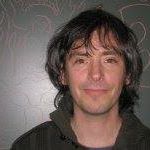
Michael Laird
view source
Michael A Laird Gage
view source
Michael Owen Laird
view source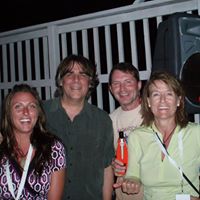
Michael Lizanne Laird
view source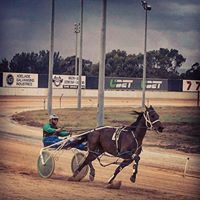
Michael Laird
view source
Michael Laird
view sourceYoutube
Plaxo

Michael Laird
view sourceGreater Boston areaConsulting Software Engineer, Video Editors Group... Past: Sr. Software Engineer, R & D group, Avionics Division at Sanders a Lockheed Martin Company

Michael Laird
view sourceAssistant Superintendent at Splendora ISD
Classmates

Michael Laird
view sourceSchools:
Greater Latrobe High School Latrobe PA 1983-1987
Community:
Roger Earls, Ken Anderson

Michael Laird
view sourceSchools:
Immaculate Heart of Mary School Detroit MI 1959-1967
Community:
Bryce Johnston, Timothy Duggan, Virginia Bohme

Michael Lard (Laird)
view sourceSchools:
Westview High School Topeka IN 2005-2009
Community:
Douglas Wright, Amber Yoder, Dennis Foster, Mechelle Porter, Kim Forehand

Michael Laird
view sourceSchools:
Sodus High School Sodus NY 1994-1998
Community:
Angelita Adams, Barbara Henry

Michael Laird
view sourceSchools:
Ralston Intermediate School Belmont CA 1967-1971
Community:
Lynne Beckett, Jim Lenhart, Craig Harris, Mark Watters, Steve Vizena

Michael Laird
view sourceSchools:
Loyola Academy Wilmette IL 1988-1992
Community:
Charles Bidwill, Kandice Underhill, Michael Link

Michael Laird
view sourceSchools:
Wayne City Elementary School Wayne City IL 1982-1986, Wayne City High School Wayne City IL 1987-1990
Community:
Patricia Schumm, Nancy Scrivner, Bill Kirk, Jean Neavill

Michael Laird
view sourceSchools:
Fairfield High School Fairfield AL 1963-1967
Community:
Wanda Reed
Myspace

Michael Laird
view sourceFlickr
Googleplus
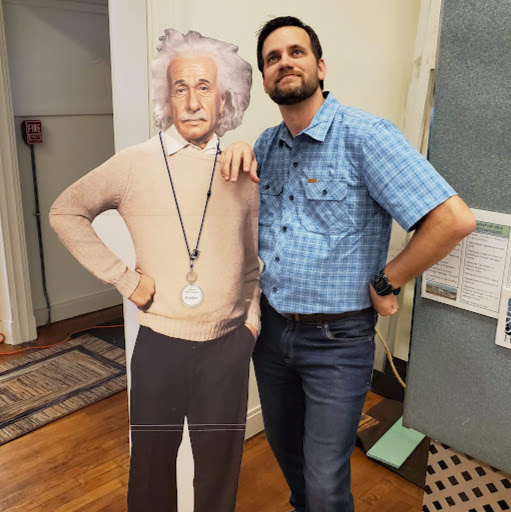
Michael Laird
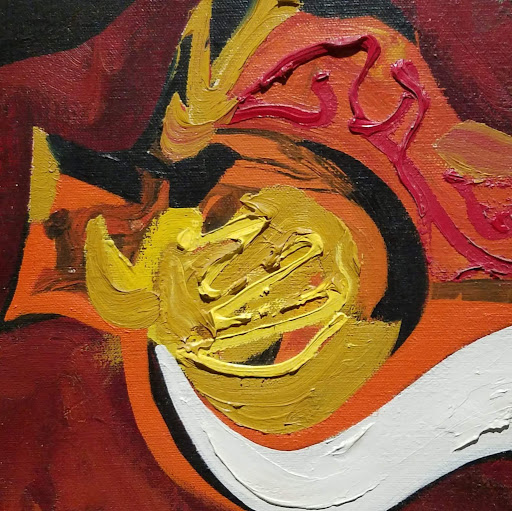
Michael Laird
Tagline:
Jazz violinist, jQuery novice & supporter, iconoclast

Michael Laird

Michael Laird

Michael Laird

Michael Laird
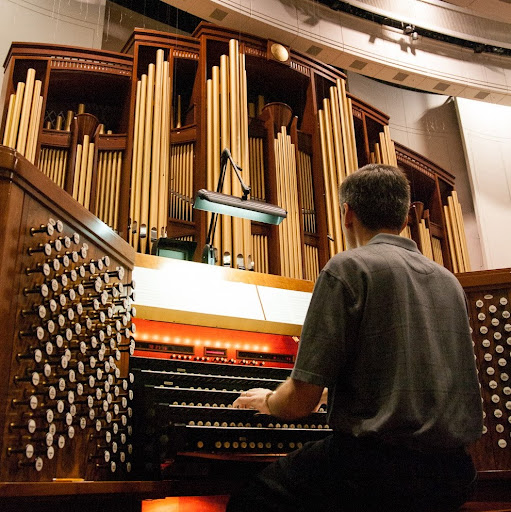
Michael Laird

Michael Laird
Get Report for Michael A Laird from Lawrence, MA, age ~78


















